개요 이중상 합금 분말
이중상 합금 분말은 높은 강도, 연성 및 내마모성과 같은 고유한 특성의 조합으로 인해 다양한 산업에서 사용되는 특수 재료입니다. 이 분말은 일반적으로 연질상과 경질상의 조합인 두 개의 뚜렷한 상으로 구성되어 재료의 전반적인 성능을 향상시키기 위해 함께 작동합니다.
이 기사에서는 조성, 특성, 응용 분야 및 시장에서 사용할 수 있는 다양한 모델을 포함하여 이중상 합금 분말의 세부 사항을 자세히 살펴봅니다. 또한 다른 재료와 비교하여 이러한 분말의 장점과 단점을 살펴보고 공급업체, 가격 및 표준에 대한 통찰력을 제공합니다.

이중상 합금 분말의 조성
이중상 합금 분말은 일반적으로 연질상과 경질상인 두 개의 뚜렷한 금속상의 혼합물로 구성됩니다. 연질상은 종종 연성과 인성을 제공하는 반면, 경질상은 강도와 내마모성에 기여합니다. 이러한 분말의 조성은 의도된 응용 분야에 따라 크게 다를 수 있습니다.
| 금속 분말 모델 | 구성 | 연질상 | 경질상 | 기타 요소 |
|---|---|---|---|---|
| DP1001 | Fe-Cr-Mn | 페라이트 | 마르텐사이트 | Mo, Ni |
| DP1002 | Fe-Mo-Ni | 페라이트 | 베이나이트 | Cr, C |
| DP1003 | Fe-Mn-Si | 오스테나이트 | 마르텐사이트 | Cr, Ni |
| DP1004 | Ti-Al-V | 알파-티타늄 | 베타-티타늄 | O, N |
| DP1005 | Ni-Cr-Mo | 오스테나이트 | 페라이트 | Ti, Al |
| DP1006 | Fe-C-Mo | 마르텐사이트 | 페라이트 | Ni, Mn |
| DP1007 | Co-Cr-Mo | 오스테나이트 | 탄화물 | Ni, W |
| DP1008 | Fe-Ni-Cr | 페라이트 | 베이나이트 | Mo, Mn |
| DP1009 | Ni-Fe-Cr | 오스테나이트 | 페라이트 | Al, Ti |
| DP1010 | Fe-Mn-C | 오스테나이트 | 마르텐사이트 | Cr, Mo |
주요 내용:
- 이중상 합금 분말의 조성은 응용 분야 및 원하는 특성에 따라 다릅니다.
- 연질상과 경질상 모두의 존재는 재료의 고유한 연성과 강도의 균형을 달성하는 데 중요합니다.
이중상 합금 분말의 특성
이중상 합금 분말의 특성은 주로 조성과 연질상과 경질상의 비율에 의해 결정됩니다. 이러한 분말은 까다로운 응용 분야에 적합하게 만드는 고유한 기계적 특성의 조합을 나타냅니다.
기계적 특성
| 속성 | 일반적인 범위 | 중요성 |
|---|---|---|
| 인장 강도 | 500 – 1500 MPa | 고강도 응용 분야 |
| 연성 | 10% – 30% 연신율 | 성형성 및 인성 |
| 경도 | 200 – 600 HV | 내마모성 |
| 피로 강도 | 높음 | 장기 내구성 |
| 내식성 | 보통에서 높음 | 내화학성 |
| 밀도 | 7.0 – 8.5 g/cm³ | 무게 및 질량에 영향 |
열 속성
| 속성 | 일반적인 범위 | 중요성 |
|---|---|---|
| 녹는점 | 1300°C – 1600°C | 고온 애플리케이션 |
| 열 전도성 | 15 – 25 W/m·K | 열 방출 |
| 열팽창 | 10 – 15 µm/m·K | 치수 안정성 |
주요 내용:
- 이중상 합금 분말은 높은 강도와 연성의 균형을 제공하여 두 가지 특성이 모두 중요한 응용 분야에 이상적입니다.
- 또한 이 분말은 내마모성과 내식성이 우수하여 가혹한 환경에서 성능을 향상시킵니다.
애플리케이션 이중상 합금 분말
이중상 합금 분말은 다용도 특성으로 인해 광범위한 산업에서 사용됩니다. 자동차에서 항공우주에 이르기까지 이 분말은 고성능 부품 제조에 중요한 역할을 합니다.
산업 및 응용 분야
| 산업 | 애플리케이션 | 이중상 합금 분말 사용의 이점 |
|---|---|---|
| 자동차 | 엔진 부품, 변속기 기어, 섀시 부품 | 향상된 강도 및 피로 저항 |
| 항공우주 | 구조 부품, 터빈 블레이드 | 높은 강도 대 중량비, 열적 안정성 |
| 산업 기계 | 절삭 공구, 내마모 부품, 베어링 | 내마모성, 내구성 |
| 의료 | 임플란트, 수술 기구 | 생체 적합성, 내식성 |
| 석유 및 가스 | 드릴 비트, 파이프라인, 밸브 | 내식성, 인성 |
| 전자 제품 | 커넥터, 방열판, 케이스 | 열 전도성, 내구성 |
| 해양 | 프로펠러, 샤프트, 수중 하우징 | 내식성, 강도 |
| 건설 | 보강재, 패스너, 구조 요소 | 높은 강도, 인성 |
| 방어 | 방탄 장갑, 무기 부품 | 탄도 저항, 내구성 |
| 에너지 | 터빈 부품, 열교환기 | 고온 및 내마모성 |
주요 내용:
- 이중상 합금 분말은 강도와 연성이 모두 필요한 산업에서 필수적입니다.
- 다용도로 인해 일상 용품에서 특수 장비에 이르기까지 광범위한 응용 분야에서 사용할 수 있습니다.
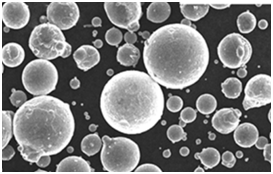

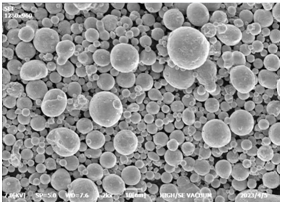

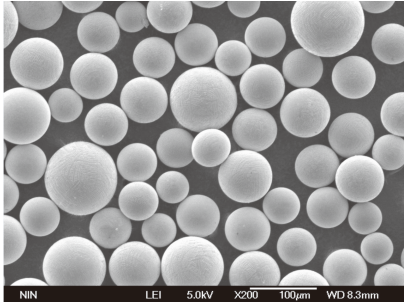
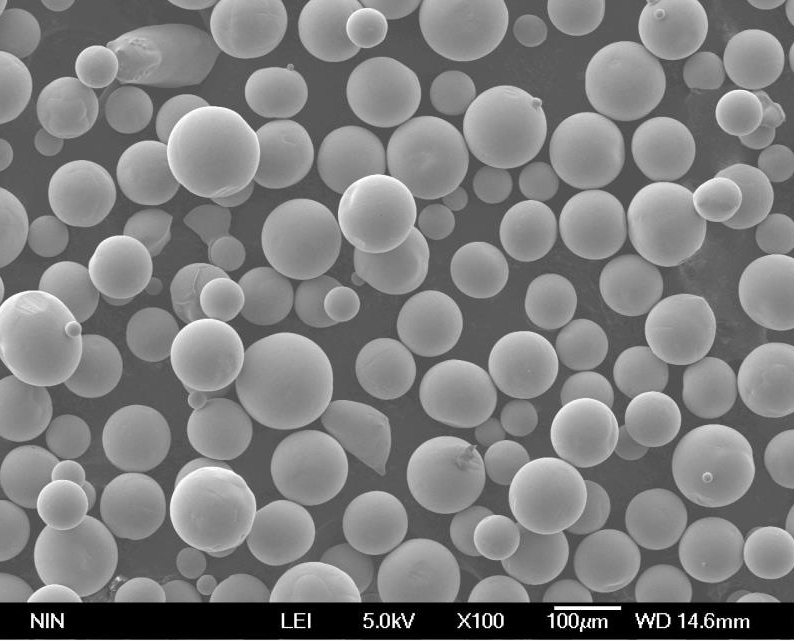
사양, 크기, 등급 및 표준
특정 응용 분야에 이중상 합금 분말을 선택할 때는 크기, 등급 및 산업 표준 준수를 포함한 사양을 고려하는 것이 중요합니다. 이렇게 하면 선택한 분말이 필요한 성능 기준을 충족하는지 확인할 수 있습니다.
사양 및 크기
| 모델 | 입자 크기 범위 | 등급 | 표준 |
|---|---|---|---|
| DP1001 | 20 – 50 µm | A등급 | ASTM B243 |
| DP1002 | 15 – 45 µm | B등급 | ISO 3923-1 |
| DP1003 | 10 – 40 µm | 그리드 C | AMS 4998 |
| DP1004 | 25 – 55 µm | A등급 | MIL-P-46111 |
| DP1005 | 20 – 50 µm | B등급 | DIN EN 10204 |
| DP1006 | 15 – 45 µm | 그리드 C | ISO 4499-2 |
| DP1007 | 10 – 40 µm | A등급 | ASTM F2885 |
| DP1008 | 25 – 55 µm | B등급 | JIS Z 2506 |
| DP1009 | 20 – 50 µm | 그리드 C | ISO 4499-1 |
| DP1010 | 15 – 45 µm | A등급 | ASTM B214 |
표준 및 규정 준수
| 표준 | 설명 | 중요성 |
|---|---|---|
| ASTM B243 | 분말 야금의 표준 용어 | 정의의 균일성 보장 |
| ISO 3923-1 | 분말의 겉보기 밀도 결정 | 품질 관리에 도움 |
| AMS 4998 | 티타늄 합금 분말 표준 | 항공우주 산업에 중요 |
| MIL-P-46111 | 분말 금속에 대한 군사 사양 | 국방 응용 분야 규정 준수 |
| DIN EN 10204 | 금속 제품 인증 | 재료 추적성 보장 |
| ISO 4499-2 | 금속 분말의 미세 구조 표준 | 일관성에 필수적 |
| ASTM F2885 | 적층 제조(AM) 분말 표준 | AM 공정에 중요 |
| JIS Z 2506 | 분말 금속에 대한 일본 산업 표준 | 국제 무역에 중요 |
| ASTM B214 | 금속 분말의 체 분석 시험 방법 | 적절한 입자 크기 분포 보장 |
주요 내용:
- 산업 표준을 준수하면 이중상 합금 분말이 필요한 품질 및 성능 기준을 충족하는지 확인할 수 있습니다.
- 다양한 등급과 입자 크기를 통해 특정 응용 분야의 요구 사항에 따라 사용자 정의할 수 있습니다.
이중상 합금 분말의 장점
이중상 합금 분말은 제조업체와 엔지니어에게 매력적인 선택이 되도록 하는 몇 가지 장점을 제공합니다. 이러한 이점은 연질상과 경질상의 조합으로 부여된 고유한 특성에서 비롯됩니다.
단상 합금에 비해 장점
| 이점 | 설명 | 비교 |
|---|---|---|
| 강화된 강도 | 이중상 합금은 재료를 보강하는 경질상의 존재로 인해 단상 합금보다 인장 강도가 더 높습니다. | 단상 합금에 비해 이중상 합금은 기계적 응력을 더 잘 견딜 수 있습니다. |
| 향상된 연성 | 이중상 합금의 연질상은 연성을 제공하여 강도를 손상시키지 않고 재료를 더 성형할 수 있습니다. | 단상 합금은 종종 연성을 위해 강도를 희생하지만 이중상 합금은 둘 다 달성합니다. |
| 더 나은 내마모성 | 이러한 합금의 경질상은 내마모성이 뛰어나 부품의 수명을 연장합니다. | 이중상 합금은 높은 내마모성이 필요한 응용 분야에서 단상 합금보다 성능이 뛰어납니다. |
| 더 높은 피로 저항 | 상의 조합을 통해 이중상 합금은 사이클 부하를 받는 부품에 중요한 피로에 더 잘 저항할 수 있습니다. | 단상 합금은 이중상 합금이 뛰어난 반복적인 응력 하에서 실패할 수 있습니다. |
| 다양한 애플리케이션 | 이중상 합금의 고유한 특성으로 인해 자동차에서 항공우주에 이르기까지 광범위한 응용 분야에 적합합니다. | 단상 합금은 종종 응용 범위가 제한적입니다. |
주요 내용:
- 이중상 합금은 재료 과학에서 종종 어려운 강도와 연성 사이의 균형을 이룹니다.
- 향상된 특성으로 인해 단상 합금보다 더 다재다능하고 내구성이 뛰어납니다.
이중상 합금 분말의 제한 사항
이중상 합금 분말은 많은 이점을 제공하지만 특정 제한 사항도 있습니다. 재료를 선택할 때 정보에 입각한 결정을 내리려면 이러한 단점을 이해하는 것이 필수적입니다.
도전 과제와 한계
| 제한 사항 | 설명 | 응용 분야에 미치는 영향 |
|---|---|---|
| 비용 | 이중상 합금 분말은 조성과 제조 공정의 복잡성으로 인해 생산 비용이 더 비싼 경우가 많습니다. | 높은 비용으로 인해 이점이 비용을 정당화하는 고성능 응용 분야로 사용이 제한될 수 있습니다. |
| 가공 어려움 | 여러 상의 존재는 소결 및 적층 제조와 같은 가공 기술을 복잡하게 만들 수 있습니다. | 특수 장비와 공정이 필요할 수 있으며, 이로 인해 생산 시간과 비용이 증가합니다. |
| 제한된 가용성 | 모든 이중상 합금 분말을 쉽게 사용할 수 있는 것은 아니며, 특히 특수 조성을 가진 분말은 더욱 그렇습니다. | 이로 인해 리드 타임이 길어지고 잠재적인 공급망 문제가 발생할 수 있습니다. |
| 상 불균형 가능성 | 부적절한 가공 또는 조성 제어는 연질상과 경질상 사이에 불균형을 초래하여 최적의 특성을 얻지 못할 수 있습니다. | 재료 성능이 손상되어 최종 제품의 신뢰성에 영향을 미칠 수 있습니다. |
| 환경에 대한 민감성 | 일부 이중상 합금은 고온 또는 부식성 환경과 같은 특정 환경 조건에 민감할 수 있습니다. | 이로 인해 가혹하거나 가변적인 조건에서 특정 응용 분야의 사용이 제한될 수 있습니다. |
주요 내용:
- 이중상 합금 분말과 관련된 복잡성과 비용은 광범위한 채택에 장벽이 될 수 있습니다.
- 이러한 재료의 잠재력을 최대한 실현하려면 적절한 가공 및 환경 고려 사항이 중요합니다.
공급업체 및 가격 이중상 합금 분말
올바른 공급업체를 선택하고 가격 구조를 이해하는 것은 이중상 합금 분말을 조달하는 데 중요합니다. 여기서는 주요 공급업체 중 일부를 살펴보고 가격 추세에 대한 개요를 제공합니다.
주요 공급업체
| 공급업체 이름 | 위치 | 스페셜티 | 평판 |
|---|---|---|---|
| 카펜터 기술 | 미국 | 항공우주 등급 합금 | 고품질, 신뢰성 |
| 호가나스 AB | 스웨덴 | 다양한 산업용 금속 분말 | 업계 선두주자 |
| 샌드빅 재료 기술 | 스웨덴 | 특수 합금 및 분말 | 혁신적이고 신뢰할 수 있는 |
| GKN 분말 야금 | 독일 | 첨단 금속 분말 | 확립되고 평판이 좋은 |
| ATI 파우더 메탈 | 미국 | 맞춤형 합금 분말 | 고급 맞춤형 솔루션 |
| 에라메트 | 프랑스 | 니켈 및 합금 분말 | 글로벌 공급업체 |
| 스미토모 전기 산업 | 일본 | 고성능 분말 | 정밀성, 품질 |
| HC 스탁 | 독일 | 내화성 금속 분말 | 틈새, 전문화 |
| 리오틴토 금속 분말 | 캐나다 | 철강 금속 분말 | 일관성, 신뢰성 |
| Tekna | 캐나다 | AM용 구형 분말 | 첨단 기술 |
가격 개요
| 파우더 모델 | 가격(USD/kg) | 공급업체 | 비고 |
|---|---|---|---|
| DP1001 | $75 – $90 | 카펜터 기술 | 항공우주 애플리케이션 |
| DP1002 | $65 – $80 | 호가나스 AB | 일반 산업용 |
| DP1003 | $85 – $100 | 샌드빅 재료 기술 | 고성능 응용 분야 |
| DP1004 | $90 – $110 | GKN 분말 야금 | 특수 자동차 용도 |
| DP1005 | $70 – $85 | ATI 파우더 메탈 | 맞춤형 솔루션 |
| DP1006 | $60 – $75 | 에라메트 | 비용 효율적이고 일반적인 용도 |
| DP1007 | $95 – $115 | 스미토모 전기 산업 | 정밀 제조 |
| DP1008 | $80 – $95 | HC 스탁 | 틈새 응용 분야 |
| DP1009 | $75 – $90 | 리오틴토 금속 분말 | 일관된 품질 |
| DP1010 | $100 – $120 | Tekna | 첨단 제조 공정 |
주요 내용:
- 이중상 합금 분말의 가격은 응용 분야와 공급업체에 따라 크게 다릅니다.
- 고성능 분말은 일반적으로 특수 특성과 생산의 복잡성을 반영하여 프리미엄 가격으로 제공됩니다.
이중상 합금 분말 모델 비교
다양한 이중상 합금 분말 모델을 비교하면 특정 응용 분야에 가장 적합한 재료를 선택하는 데 도움이 될 수 있습니다. 아래에서는 앞서 논의한 10가지 모델의 주요 특성과 응용 분야를 비교합니다.
모델 비교
| 모델 | 힘 | 연성 | 내마모성 | 애플리케이션 |
|---|---|---|---|---|
| DP1001 | 높음 | 보통 | 높음 | 항공우주, 자동차 |
| DP1002 | 보통 | 높음 | 보통 | 산업 기계 |
| DP1003 | 높음 | 보통 | 매우 높음 | 절삭 공구, 마모 부품 |
| DP1004 | 매우 높음 | 낮음 | 높음 | 구조적 구성 요소 |
| DP1005 | 높음 | 높음 | 보통 | 의료용 임플란트 |
| DP1006 | 보통 | 보통 | 높음 | 일반 제조 |
| DP1007 | 매우 높음 | 낮음 | 매우 높음 | 국방, 항공우주 |
| DP1008 | 높음 | 보통 | 높음 | 해양, 석유 및 가스 |
| DP1009 | 보통 | 높음 | 보통 | 전자 제품, 방열판 |
| DP1010 | 매우 높음 | 보통 | 매우 높음 | 첨단 제조 |
주요 내용:
- 이중상 합금 분말의 선택은 강도, 연성 또는 내마모성과 같은 응용 분야의 특정 요구 사항을 기반으로 해야 합니다.
- 서로 다른 모델은 이러한 특성의 다양한 균형을 제공하므로 의도된 용도에 맞게 재료를 일치시키는 것이 필수적입니다.
이중상 합금 분말 사용의 장단점
이중상 합금 분말의 장단점을 이해하면 다양한 응용 분야에서 사용에 대한 정보를 바탕으로 결정을 내리는 데 도움이 됩니다. 여기에서는 주요 장점과 제한 사항을 간략하게 설명합니다.
장점
| 이점 | 설명 |
|---|---|
| 높은 강도 | 고응력 환경에 이상적인 뛰어난 인장 강도를 제공합니다. |
| 연성 | 부품을 성형하고 성형하는 데 필요한 유연성을 제공합니다. |
| 내마모성 | 마모 조건에 노출된 부품의 수명을 연장합니다. |
| 피로 저항 | 사이클 하에서 내구성을 향상시켜 고장 위험을 줄입니다. |
| 다용도성 | 광범위한 산업 및 응용 분야에 적합합니다. |
단점
| 단점 | 설명 |
|---|---|
| 비용 | 높은 생산 비용은 비용에 민감한 응용 분야에서 사용을 제한할 수 있습니다. |
| 복잡한 처리 | 특수 장비 및 공정이 필요하여 생산 시간이 늘어납니다. |
| 가용성 | 특정 모델의 제한된 가용성은 공급망 문제를 야기할 수 있습니다. |
| 환경 민감도 | 일부 합금은 극한 환경에서 성능이 좋지 않아 사용이 제한될 수 있습니다. |
주요 내용:
- 이중상 합금 분말은 상당한 이점을 제공하지만 비용 및 처리 복잡성과 관련하여 특히 고려해야 할 과제도 따릅니다.
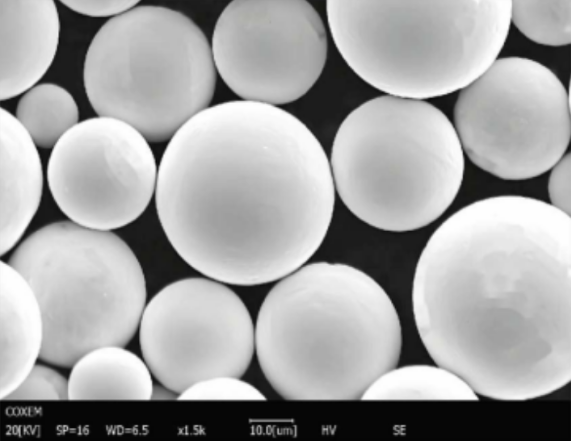
자주 묻는 질문
| 질문 | 답변 |
|---|---|
| 이중상 합금 분말이란 무엇입니까? | 이중상 합금 분말은 일반적으로 연성 및 경질 상의 조합인 두 개의 별개의 금속 상으로 구성된 재료로, 강도와 연성의 독특한 균형을 제공합니다. |
| 이중상 합금 분말의 주요 응용 분야는 무엇입니까? | 고강도 및 내마모성이 중요한 자동차, 항공우주, 산업 기계, 의료 및 국방과 같은 산업에서 사용됩니다. |
| 이중상 합금 분말은 어떻게 만들어집니까? | 이러한 분말은 일반적으로 분무 및 소결을 포함한 분말 야금 기술을 통해 생산되며, 이를 통해 재료의 조성 및 특성을 정밀하게 제어할 수 있습니다. |
| 이중상 합금이 단상 합금보다 선호되는 이유는 무엇입니까? | 이중상 합금은 단상 합금에 비해 강도 및 연성과 같은 기계적 특성의 더 나은 균형을 제공하여 까다로운 응용 분야에 더 다양하게 사용할 수 있습니다. |
| 이중상 합금 분말 사용의 제한 사항은 무엇입니까? | 주요 제한 사항으로는 높은 비용, 복잡한 처리 요구 사항 및 환경 조건에 대한 잠재적 민감성이 있습니다. |
| 이중상 합금 분말을 적층 제조에 사용할 수 있습니까? | 예, 이중상 합금 분말은 고강도, 복잡한 부품을 생산할 수 있는 능력으로 인해 적층 제조에 점점 더 많이 사용되고 있습니다. |
| 이중상 합금 분말은 어떤 표준을 준수해야 합니까? | 응용 분야에 따라 ASTM, ISO, AMS 및 MIL 사양과 같은 산업 표준을 준수해야 합니다. |
| 입자 크기는 이중상 합금 분말의 성능에 어떤 영향을 미칩니까? | 더 작은 입자 크기는 분말의 소결성 및 기계적 특성을 향상시킬 수 있으며, 더 큰 입자는 특정 제조 공정에 선호될 수 있습니다. |
| 이중상 합금 분말과 관련된 환경적 문제가 있습니까? | 일부 이중상 합금은 고온 또는 부식성 환경과 같은 특정 환경 조건에 민감하여 성능에 영향을 미칠 수 있습니다. |
| 응용 분야에 적합한 이중상 합금 분말을 어떻게 선택해야 합니까? | 필요한 기계적 특성, 응용 환경, 처리 방법 및 비용과 같은 요소를 고려하여 이중상 합금 분말을 선택하십시오. |

